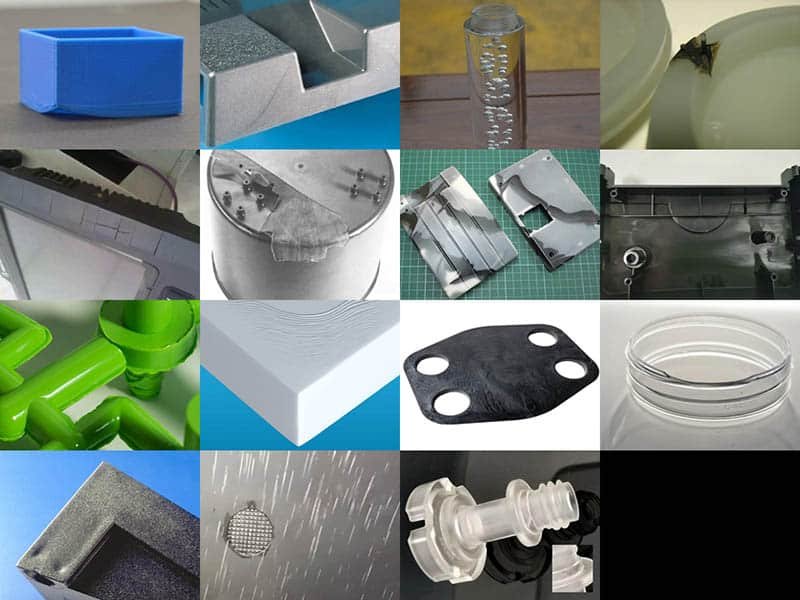It is important to avoid common mistakes in plastic material selection during the injection molding process. It is a critical factor in product design and development that can significantly influence the overall success of a product. Choosing the wrong plastic material can lead to a series of issues. By avoiding common mistakes in material selection, companies can enhance product performance, reduce costs, and ensure safety, ultimately leading to greater customer satisfaction and business success. In this post, we will explore the common mistakes in plastic material selection and how to avoid them.
1. Lack of Knowledge about Polymers
Many designers and engineers may have limited knowledge of the various polymers available, leading to poor material choices. Familiarity with the properties and limitations of different plastics is crucial for making informed decisions. More than 90 generic plastics and around 1,000 sub-generic modifications with 50,000 commercial grades available from over 500 manufacturers. Understanding the basics of polymer structure and properties, such as the differences between thermoset, thermoplastic (amorphous and semi-crystalline), and elastomers, is essential for selecting the right material.
It is essential to have a strong understanding of polymers. Such as online courses, educational websites, books, and publications are resources for education and training, seeking experienced material suppliers’ help is also a way to avoid mistakes in plastic material selection.
2. Ignoring Application Requirements
Failing to consider the application’s specific requirements, such as mechanical, thermal, and chemical properties, can result in selecting an inappropriate material. Each application demands a careful evaluation of how the material will perform under expected conditions. Product requirements include mechanical property needs, user environment requirements such as UV exposure, moisture, and temperature., function requirements, secondary process requirements, cost requirements, and certification requirements.
We should thoroughly Evaluate Application Requirements. Clearly outline the mechanical, thermal, chemical, and environmental conditions the product will face. Refer to relevant standards and guidelines that specify material requirements for similar applications.
3. Inadequate Understanding of Material Characteristics
Polymers exhibit different behaviors under stress, temperature, and environmental conditions. Not accounting for factors like creep, fatigue, and susceptibility to chemical attacks can lead to product failures. Polymers are visco-elastic, time, temperature & stress-dependent, and susceptible to creep rupture, stress relaxation, cyclic strain damage, permeation, chemical attack, thermal degradation, environmental stress cracking, and aging via physical and chemical processes.
We should understand material behavior under various conditions. Conduct laboratory tests to evaluate properties such as tensile strength, impact resistance, and thermal stability under expected service conditions. Utilize simulation tools to model how materials will behave under different stresses and environmental factors, helping predict potential failure modes.
4. Overlooking Manufacturing Processes
The selected material must be compatible with the manufacturing process. For instance, materials that are too thick or thin can cause issues during injection molding, leading to defects like short shots, dimensional issues, or cosmetic problems. Choosing a substitute material with similar molding conditions, such as shrinkage rate and flowability, is crucial to reduce manufacturing issues.
Optimize manufacturing processes to ensure material compatibility with manufacturing methods. Work closely with production engineers to understand the implications of material selection on manufacturing processes, such as injection molding or extrusion. Use mold flow simulation software to analyze how the chosen material will behave during the molding process, identifying potential issues like short shots or warping. Ensure that the part design accommodates the selected material’s flow characteristics and processing requirements.
5. Failure to Prototype
Skipping prototyping can prevent the identification of potential issues in material selection. Prototyping allows for testing the material’s performance in real-world conditions, which can highlight any inadequacies before full-scale production begins. Making a comparison table of plastic properties to understand the pros and cons of the materials, then arranging trial run verifications, is a recommended approach.
Implementing prototyping and testing is important. Develop prototypes using the selected material to test for performance, fit, and functionality before full-scale production. Use an iterative process to refine the design and material selection based on feedback from prototype testing.
6. Not Considering Cost Implications
While initial material costs may seem low, overlooking the total cost of ownership—including potential failures, recalls, or litigation—can lead to significant financial repercussions. A long-term perspective on material selection is necessary.
Before selecting materials, perform a detailed cost analysis that includes not only the initial material costs but also long-term expenses related to maintenance, durability, and potential replacements to balance performance and cost.







